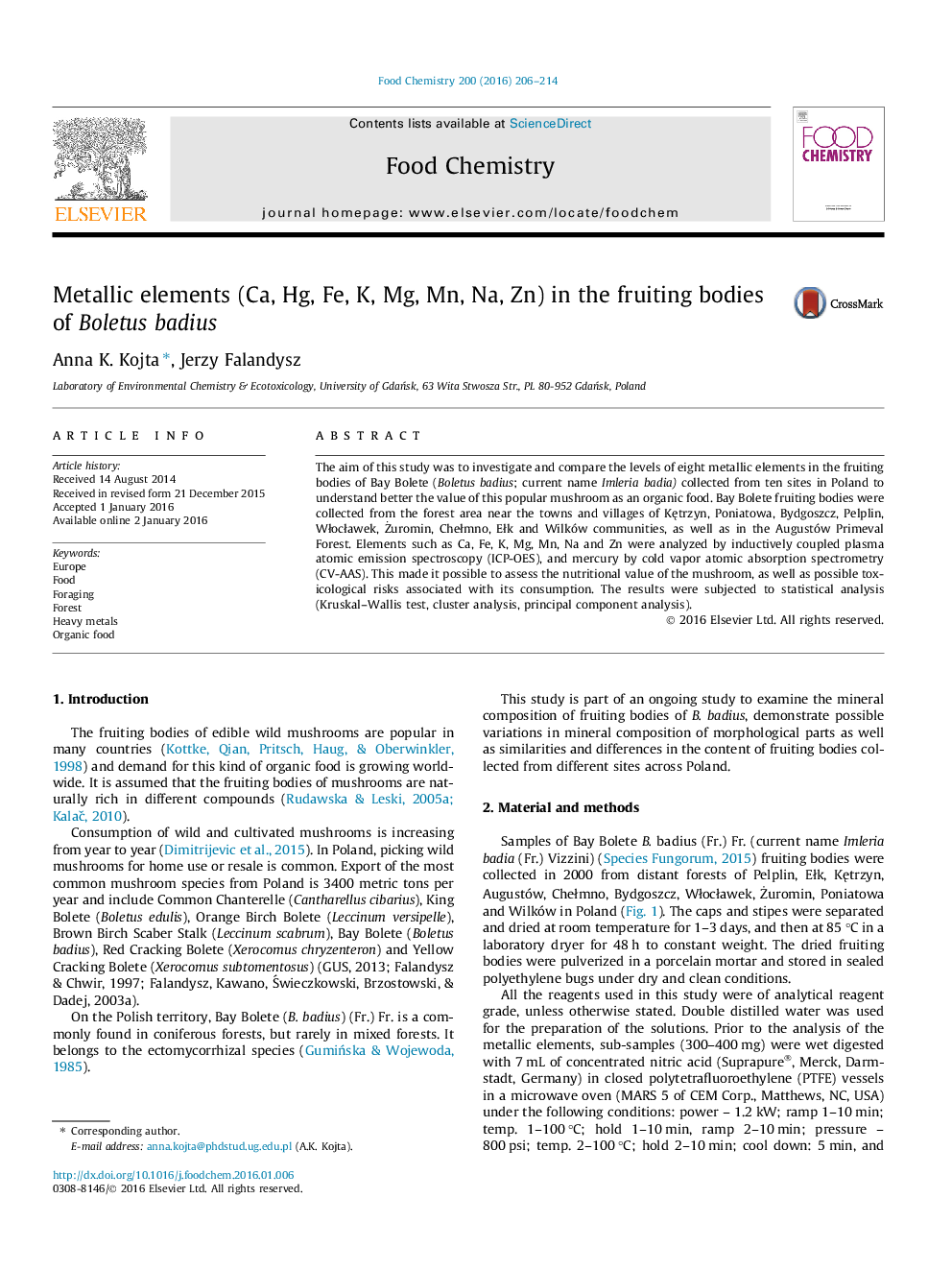| کد مقاله | کد نشریه | سال انتشار | مقاله انگلیسی | نسخه تمام متن |
|---|---|---|---|---|
| 1184089 | 1492092 | 2016 | 9 صفحه PDF | دانلود رایگان |

• Boletus badius mushrooms were collected from several places in Poland.
• Nutritional value and toxicological risks bodies associated with mushroom consumption.
• Metallic elements (Ca, Fe, K, Mg, Mn, Na, Zn) were analyzed by ICP-OES.
• Mercury was determined by CV-AAS.
• Statistical analysis (Kruskal–Wallis test, CA, PCA).
The aim of this study was to investigate and compare the levels of eight metallic elements in the fruiting bodies of Bay Bolete (Boletus badius; current name Imleria badia) collected from ten sites in Poland to understand better the value of this popular mushroom as an organic food. Bay Bolete fruiting bodies were collected from the forest area near the towns and villages of Kętrzyn, Poniatowa, Bydgoszcz, Pelplin, Włocławek, Żuromin, Chełmno, Ełk and Wilków communities, as well as in the Augustów Primeval Forest. Elements such as Ca, Fe, K, Mg, Mn, Na and Zn were analyzed by inductively coupled plasma atomic emission spectroscopy (ICP-OES), and mercury by cold vapor atomic absorption spectrometry (CV-AAS). This made it possible to assess the nutritional value of the mushroom, as well as possible toxicological risks associated with its consumption. The results were subjected to statistical analysis (Kruskal–Wallis test, cluster analysis, principal component analysis).
Journal: Food Chemistry - Volume 200, 1 June 2016, Pages 206–214